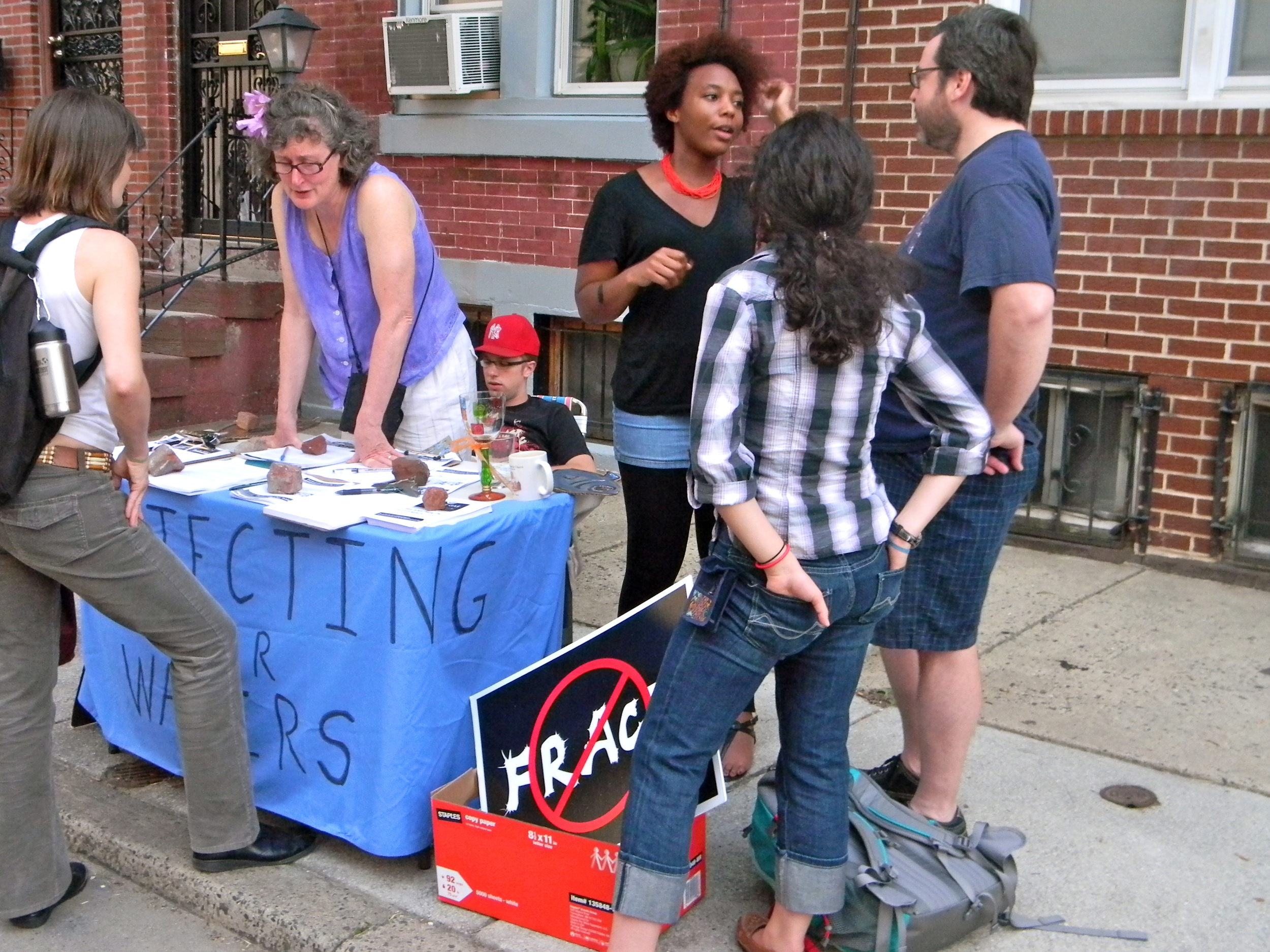This past Saturday, GRID volunteer Leia Pearl Andrew attended the Kensington South Neighborhood Advisory Council’s screening of Gasland. Here Leia reports back on fracking, Iris Bloom, and the make-shift movie theater in a formerly vacant lot.
“Your land, my land, gasland”

Spearheading a summertime series of progressive documentaries, community members gathered in Kensington last Saturday to celebrate sustainability and learn about hydraulic fracturing, or “fracking,” through Josh Fox’s film Gasland.
The Gasland screening was the pinnacle of an outdoor festival, organized by Stephanie Marsh, where people from all over the Delaware Valley gathered to raise awareness and learn about fracking in a laid-back, free-spirited setting. Attendees wore recyclable wristbands, drank PBC beer from their B.Y.O. mugs, munched on pizza and popcorn, and danced to live music performed by local bands. Intrigued locals congregated in the streets, commenting that Randolph Street had never looked so lively.
Proceeds from the event benefited the Kensington South Neighborhood Advisory Council (KSNAC), a non-profit organization that promotes economic development and sustainability for the Kensington community. This event was the first of a series of progressive documentary screenings in Kensington called Progress Under the Stars.
After sunset, attendees flocked with their blankets to the lawn facing Frank’s Kitchen to hear a brief introduction about fracking by Iris Marie Bloom, a social justice activist and the founder of Protecting Our Waters – a grassroots alliance dedicated to thwarting unconventional gas drilling to keep our water clean (Bloom’s work was the feature of GRID’s March ’11 cover story by Jacob Lambert).

For more information on Protecting Our Waters click here.
So, what the frack is hydraulic fracturing? Josh Fox explains in Gasland that fracking is a “method of gas drilling [that] blasts a mix of water and chemicals 8,000 feet into the ground [causing] a mini earthquake [that] breaks apart the rock and frees up the gas.” As a result, contaminated well water plagues those living near the fracking with severe health problems and environmental deterioration. To frack one well, between 80 and 300 chemicals (including volatile organic compounds) and one to eight million gallons of water are used.
To learn more about Gasland and fracking, click here.
Outraged? Mark your calendars for September 7th for a rally against dirty drilling in Philadlephia. For more information about the Shale Gas Outrage Rally, click here.






